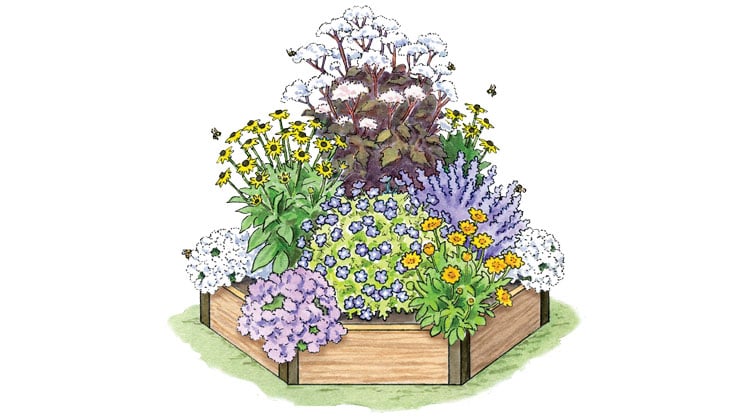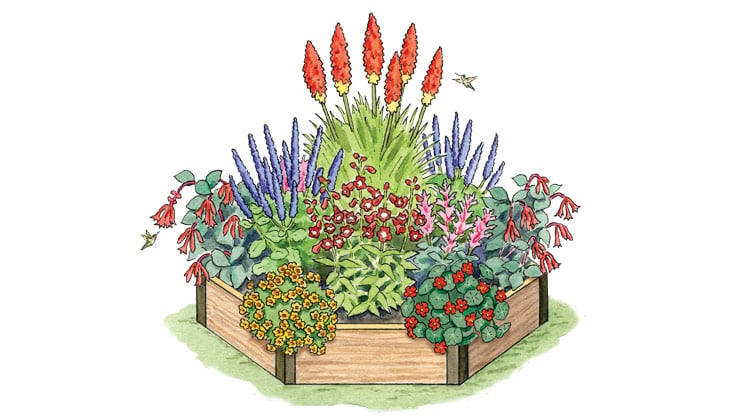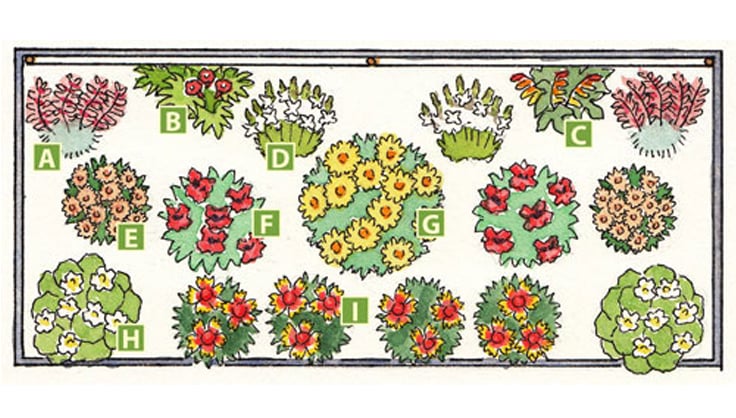Pollinator Garden Plan: Butterflies
Designed for our raised Pollinator Garden Bed
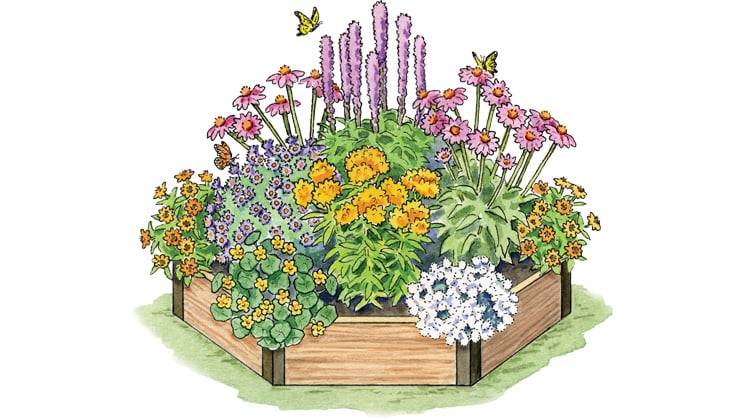 This planting plan features flowers that will attract a variety of butterflies and also provide a colorful feast for your eyes. It's designed for our Pollinator Garden Bed but the plan is perfect for any small-space planting.
This planting plan features flowers that will attract a variety of butterflies and also provide a colorful feast for your eyes. It's designed for our Pollinator Garden Bed but the plan is perfect for any small-space planting.This garden features plants that will attract butterflies all season long. In spring, the orange milkweed foliage provides food for monarch butterfly larvae. Summer brings continuous blooms in a rainbow of hues. And come autumn, the nectar-rich, fall-blooming aster helps monarch adults fuel up for their migration.
Most of the perennial varieties were chosen for their relatively compact form so they won't overwhelm the bed once they reach their mature size. Feel free to substitute plants. And rather than crowding in additional perennials, try filling in any first-year gaps with additional annual flowers, until the perennials reach their full size.
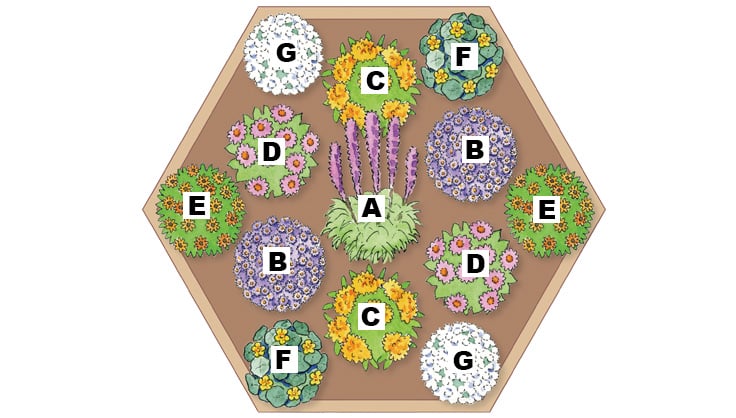
| Key | # of Plants | Plant Name | Notes |
|---|---|---|---|
| A | 1 plant | Kobold blazing star (aka gayfeather) Liatris spicata |
Showy purple flower spikes rise over grass-like foliage. Perennial, zones 3-9. |
| B | 2 plants | Purple Dome aster Aster novae-angliae |
Purple, daisy-like flowers bloom in fall. Perennial, zones 3-8. |
| C | 2 plants | Butterflyweed (aka orange milkweed) Asclepias tuberosa |
Native wildflower produces clusters of brilliant orange flowers. Perennial, zones 3-9. |
| D | 2 plants | Magnus purple coneflower Echinacea purpurea |
Purple-pink blooms have dark-orange centers. Perennial, zones 3-8. |
| E | 2 plants | Profusion Orange zinnia (aka creeping zinnia, narrow-leaf zinnia) Zinnia angustifolia |
Profuse bloomer forms a mound of bright orange flowers. Annual. |
| F | 2 plants | Peach Melba nasturtium Tropaeolum majus) |
Compact variety has creamy yellow blooms with maroon splotches. Annual. |
| G | 2 plants | Snow Princess sweet alyssum Lobularia hybrid |
Small white flowers attract a variety of pollinators. Annual. |
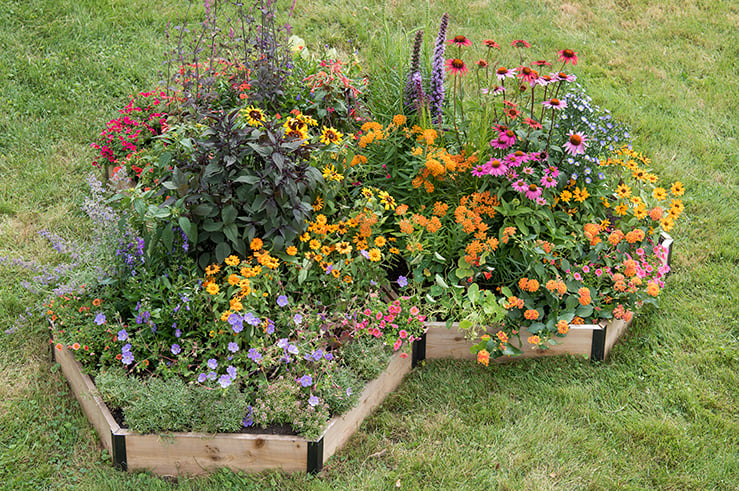 With a hexagonal shape inspired by honeycomb cells, our Pollinator Garden Beds can be configured in a variety of ways to suit your space.
With a hexagonal shape inspired by honeycomb cells, our Pollinator Garden Beds can be configured in a variety of ways to suit your space.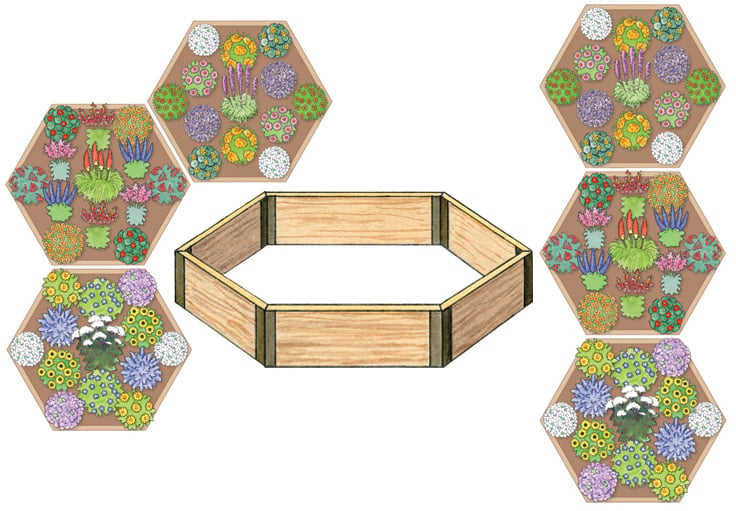 Add the hexagonal shape lets you add more more Pollinator Garden Beds any time by tucking them close together or placing end to end.
Add the hexagonal shape lets you add more more Pollinator Garden Beds any time by tucking them close together or placing end to end.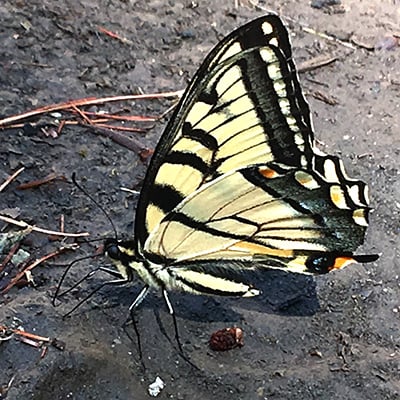 Butterflies visit mud puddles to get the moisture and minerals they need.
Butterflies visit mud puddles to get the moisture and minerals they need.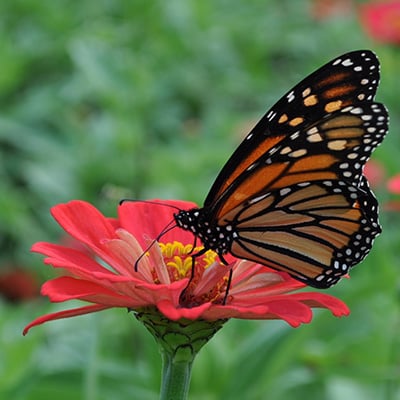 Monarch butterfly sips nectar from a zinnia flower.
Monarch butterfly sips nectar from a zinnia flower.8 Tips for Attracting Pollinators
- Single flowers — those with one ring of petals around a central disc — provide more nectar and pollen than pompom-shaped double flowers.
- Butterflies gather around mud puddles to get the minerals they need. Create a shallow basin in bare soil to catch rainfall; apply water during dry spells to keep the spot moist.
- Many pesticides, even organic ones, will harm pollinators. For example, if you use a pesticide to control caterpillars, you risk harming butterfly larvae.
- Bees tend to be most attracted to blue, purple, and yellow flowers, though you'll find them on flowers of other colors, too.
- Include plants that are native to your region. They'll be adapted to your soil and climate conditions and will be magnets for wild bees and other native pollinators.
- Include plants of various heights in your landscape, including flowering trees and shrubs.
- Butterflies, bees, and other pollinators need shelter to hide from predators, get out of the elements, and rear their young. If possible allow a section of your landscape "go wild" with unmown lawn, fallen leaves, and small piles of twigs.
- Pollinators vary in their preference for flower shape (bowl-shaped, flat-topped, tubular, etc.) and color, so include a variety of both in your landscape.
Last updated: 11/30/2022
Print this Article:
Related Articles
Get the Dirt
Stay up to date on new articles and advice. Please fill out the information below.


